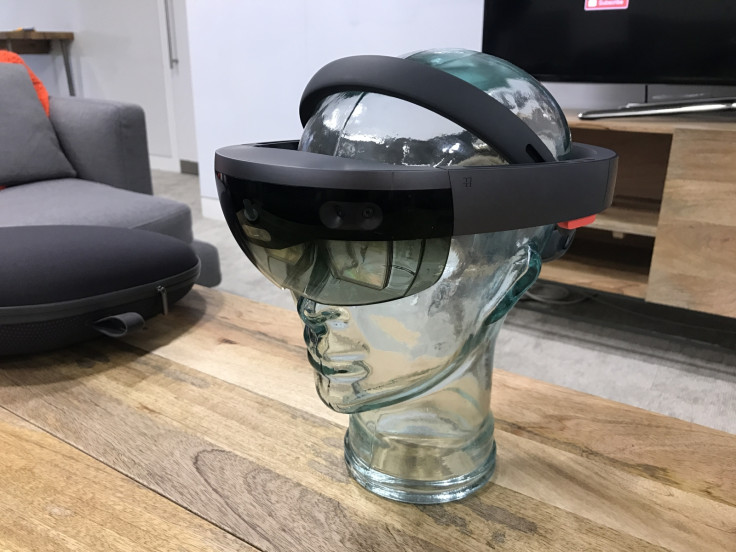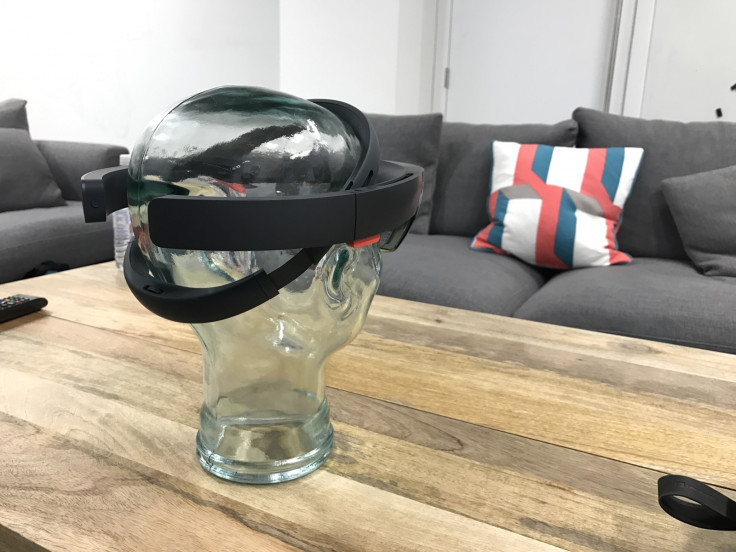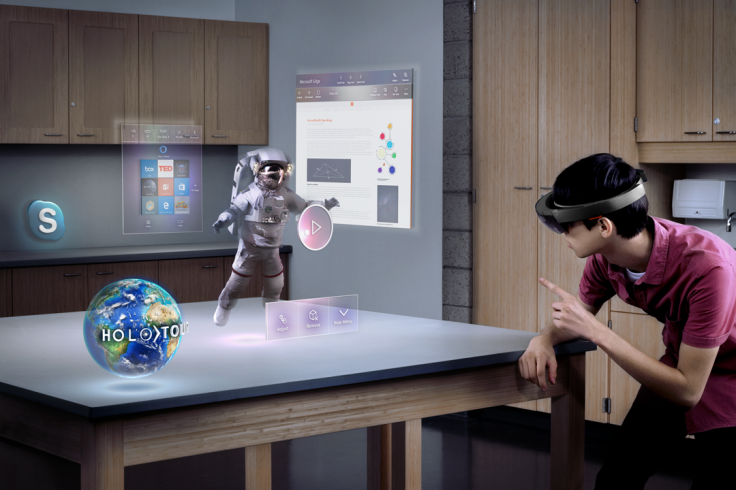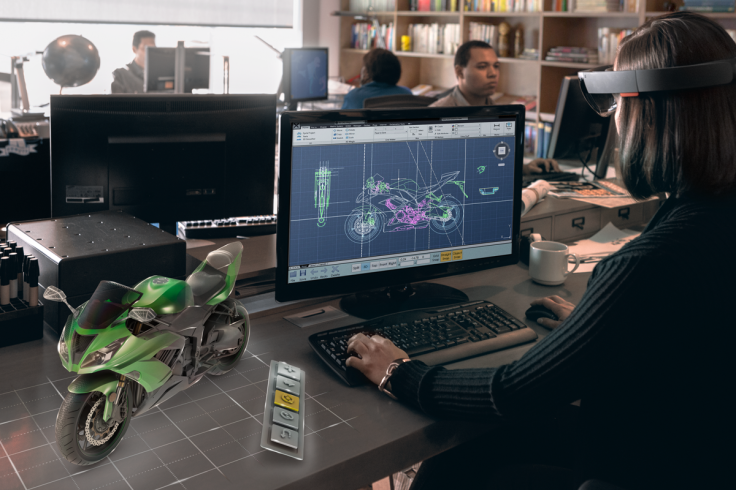Microsoft HoloLens: Hands-on with our mixed reality future
We try out the Hololens, Microsoft's mixed reality answer to virtual reality.

As Facebook, Google, Sony, Samsung and others invest heavily in virtual reality (VR), Microsoft is on a different path. Instead of blindfolding us with headsets and taking us into an entirely new world, Microsoft wants to blend fiction with what's already around us to create mixed reality (MR).
The first product to demonstrate this is HoloLens, which went on sale to developers in the US earlier this year and is now available in the UK. It is not, unlike the Samsung Gear VR, PlayStation VR and others, a product aimed at consumers. Instead it is being sold to developers who Microsoft hopes will produce HoloLens applications in the worlds of design, manufacturing, education, communication, engineering and more.
IBTimes UK recently spent some time trying out HoloLens, which can be pre-ordered in the UK now for £2,719 ($3,345.98) and will arrive in early November. Here is everything you need to know.
The HoloLens is a self-contained device. This means everything it needs to function is built into the one unit; there are no cables, no power cable and all computing is done inside the HoloLens' HPU, or holographic processing unit. Four outward-facing cameras make sense of the world around you, along with a depth sensor and an HD video camera for recording what you see.

As a result the HoloLens is more bulky than VR headsets like the HTC Vive and Oculus Rift, but not by much. At 579g it is only slightly heavier than the 555g Vive. Microsoft has done an admirable job of packaging everything the HoloLens needs to function into a comfortable headset with between two and three hours of battery life. There are several ways to adjust the HoloLens to make it comfortable and it can be worn with glasses.
The visor blocks light like a pair of moderately tinted sunglasses, while holograms beamed into your eyes are neither searingly bright or washed out. They also seem to be of a higher resolution than most VR headsets, which can often appear grainy. HD video played by HoloLens (via a hologram attached to your living room wall like a television) really looks like HD.
Objects and aspects of the user interface appear just as your would expect them to, albeit in a much smaller area than you might be hoping for. Microsoft's augmented demonstrations of what the world looks like through HoloLens show room-sized holograms, but in reality they only appear in a small rectangle at the centre of your line-of-sight.

Imagine holding a large smartphone about 30cm (12in) from your face and that is roughly the area where holograms appear. They don't surround you like a VR game, but that isn't really the point. Microsoft wants them to supplement what you can already see, then get out of the way when you need to concentrate on something in the real world.
That way, product designers can inspect a holographic prototype on their desk, then turn away to make changes on the computer; turn back, and the prototype comes back into view because its coordinates in the real world are maintained. Return tomorrow, through a different door, and that prototype will still be in exactly the same place and facing in the same direction until you move it.
There is no game pad or physical controller for HoloLens. Instead, the wearer interacts through a combination of voice commands, "gazing" at objects or holograms, and the "air tap", a gesture performed by tapping together the thumb and index finger of one hand. The controls are intuitive and worked perfectly during our half-hour demonstration. We inspected the skeleton, heart and respiratory system of a human body, made changes to an exploded diagram of a Swiss watch, rearranged pictures on a wall, watched a video and invited a Tyrannosaurus Rex into the room.

Although these tasks don't sound particularly useful or groundbreaking, they serve as a technical demonstration to show off what HoloLens is capable of. A bit of imagination and it is easy to see where Microsoft is going here.
Where VR is perfect is when you want to jump into an entirely new world, MR has the potential to succeed in situations where human interaction is still required. Designing a new kitchen, looking at an apartment off-plan or changing the paint of a new car in the showroom; these are all examples where HoloLens can put the virtual product and a real human within the wearer's sight at the same time. It's a far more social experience than being locked away in VR.

It takes a surprisingly short amount of time to get drawn into HoloLens and forgive its shortcomings. Even though lights in the room produced a rainbow-coloured glare on the visor, we were still captivated by (and even a little cautious of) the T-Rex when, after us saying "full size", it grew to the size of a small horse just a few feet away.
A more commercially justifiable demo had us pick from two virtual paintings hung on a wall. They can be removed, resized and adjusted however you like – then purchased in reality. The mock-up living room we tried HoloLens in was scattered with virtual ornaments, models, toys and other items. It is easy to imagine an online store where you load a hologram of a piece of furniture into your lounge, change the colour, position it however you like, then buy the real thing.
It is rare in this job to be truly blown away by new technology, and while HoloLens isn't the finished product just yet, it can create those moments where we realise we have witnessed something truly amazing. Now it is over to the developers, for it is their skill and imagination which are needed if HoloLens and mixed reality are to be a success.
© Copyright IBTimes 2025. All rights reserved.






















